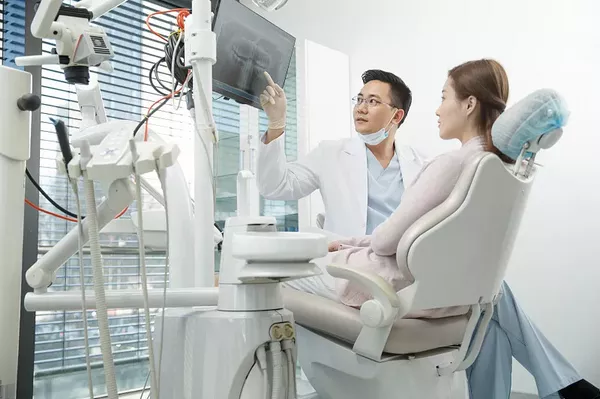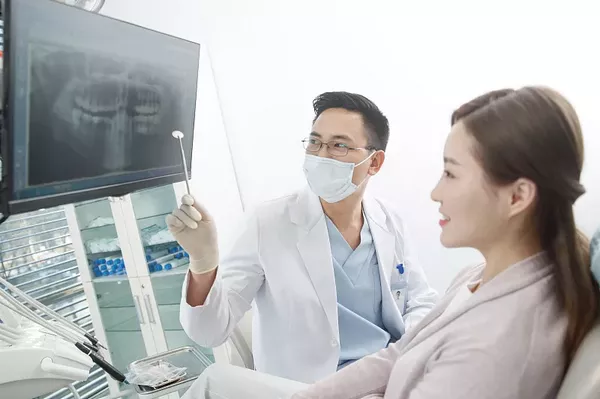A dazzling, white smile is often associated with confidence and good oral hygiene. As a result, teeth whitening has become an increasingly popular cosmetic dental procedure. While various methods are available, UV light teeth whitening has gained recognition for its quick and effective results. However, concerns have arisen about the safety of this procedure. In this comprehensive article, we will explore the process of UV light teeth whitening, its potential risks, and the steps you can take to ensure a safe and radiant smile.
Understanding UV Light Teeth Whitening
UV light teeth whitening, also known as light-activated teeth whitening, is a dental procedure designed to improve the color and brightness of your teeth. This method is typically performed in a dental office by a trained dental professional. Here’s how the process generally works:
Preparation: Before the treatment begins, the dentist will examine your teeth and gums to ensure they are in good health and suitable for the procedure. Any pre-existing dental issues, such as cavities or gum disease, may need to be addressed first.
Application of Whitening Gel: A high-concentration hydrogen peroxide or carbamide peroxide whitening gel is applied to the surface of your teeth. This gel contains active ingredients that break down stains and discolorations.
UV Light Activation: A dental UV light or blue LED light is used to activate the whitening gel. The UV or blue light energy enhances the effectiveness of the gel, accelerating the whitening process.
Multiple Sessions: The procedure may involve several cycles of gel application and UV light activation, with each cycle lasting about 15-20 minutes. The number of cycles depends on the level of whitening desired and the initial color of your teeth.
Final Rinse: Once the desired level of whitening is achieved, the dentist will rinse off the whitening gel, and you can see the immediate results of your brighter smile.
Is UV Light Teeth Whitening Safe?
The safety of UV light teeth whitening has been a topic of discussion in the dental community. While the procedure itself is generally considered safe when performed by trained professionals, there are some considerations to keep in mind:
Tooth Sensitivity: One of the most common side effects of UV light teeth whitening is tooth sensitivity. Some individuals may experience heightened sensitivity to hot or cold temperatures during and after the procedure. This sensitivity is usually temporary and can be managed with desensitizing toothpaste or gels.
Gum Irritation: The high-concentration whitening gel can sometimes irritate the gums. Dental professionals take precautions to protect the gums during the procedure, but mild irritation may occur. This typically resolves on its own.
Overuse: Excessive or frequent UV light teeth whitening can potentially damage tooth enamel, leading to tooth sensitivity and increased susceptibility to cavities. It’s essential to follow your dentist’s recommendations and not overuse the procedure.
Pre-existing Dental Issues: If you have untreated dental problems such as cavities or gum disease, UV light teeth whitening can exacerbate these issues. It’s crucial to address any pre-existing dental concerns before undergoing the procedure.
Protective Eyewear: Both patients and dental professionals should wear protective eyewear during UV light teeth whitening to shield their eyes from potential harm.
Ensuring Safe UV Light Teeth Whitening
To ensure a safe UV light teeth whitening experience, consider the following steps:
Consult with a Dental Professional: Before undergoing UV light teeth whitening, schedule a consultation with a qualified dentist. They will assess your oral health and determine if you are a suitable candidate for the procedure.
Follow Professional Recommendations: Listen to your dentist’s recommendations regarding the number of whitening sessions and aftercare. Overuse can lead to potential risks.
Manage Sensitivity: If you experience tooth sensitivity during or after the procedure, discuss it with your dentist. They can provide guidance on managing this side effect.
Maintain Good Oral Hygiene: Continue to maintain excellent oral hygiene practices, including regular brushing, flossing, and dental check-ups, to ensure the ongoing health of your teeth and gums.
Conclusion
UV light teeth whitening is generally considered safe when performed by trained dental professionals. While some individuals may experience temporary tooth sensitivity or gum irritation, these side effects are typically manageable and short-lived. To ensure a safe and effective whitening experience, consult with a qualified dentist, follow their recommendations, and maintain good oral hygiene practices. By taking these precautions, you can enjoy the benefits of a brighter, more radiant smile while prioritizing your oral health.
Related Topics:






























